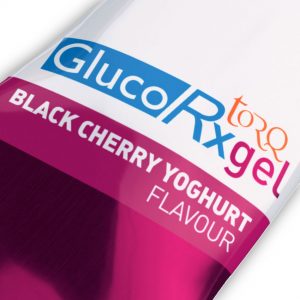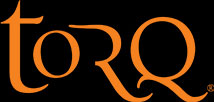Diabetes Products
TORQ are committed to diabetes management and over the coming months, the pages in this section of the website will be evolving to deliver further education as well as products of specific interest to people with diabetes. Take a closer look at our products by clicking on one of the options below.
Types of Diabetes
Diabetes is a condition in which the body’s ability to produce or respond to the hormone insulin is impaired, resulting in abnormal metabolism of carbohydrates and elevated levels of glucose in the blood.
Type 1 diabetes refers to individuals whose insulin production capabilities are impaired, whilst Type 2 diabetes refers to an impaired response by insulin receptors on the surface of cells around the body. Although both conditions, if not correctly managed, can lead to damage to the body as a result of elevated blood glucose, Type 1 and Type 2 diabetes can simply be differentiated by one being a problem with insulin production and the other being a problem with insulin sensitivity respectively.
The causes of Type 1 diabetes is relatively unknown, but is generally considered to be either passed on genetically or resulting from the body’s own immune system mistakenly destroying the insulin-producing beta cells in the pancreas. Type 2 diabetes affects those who are less active, don’t always eat a healthy balanced diet and have a higher BMI than recommended. The good news is that Type 2 diabetes can be managed very effectively through nutrition and exercise.
At TORQ we specialise in helping people to understand the facts surrounding diabetes and assisting in the management of their particular situation through education, exercise and nutritional programming.
Blood Glucose
Learning how the body regulates blood glucose is critical to understanding what is happening inside your body and will make you more intuitive in the way that you deal with your particular circumstances.
With a person without diabetes there are 2 counter-regulatory hormones called insulin and glucagon. When blood glucose moves higher, a healthy pancreas is stimulated to secrete the hormone insulin. Insulin then either pushes glucose into the cells of the human body from the blood to be metabolised or if they don’t need any energy it helps to store it as fat. Either way, blood glucose is lowered as a result.
If blood glucose gets too low, the alpha cells in the pancreas are stimulated to produce the hormone glucagon which in turn tells the liver to release stored glucose (called glycogen) from the liver, which in turn raises blood glucose. If the liver is ‘empty’ and has no glycogen sored within it, glucagon can also stimulate a process called ‘gluconeogenesis’ whereby protein is broken down and converted into blood glucose. Glucagon can also break down stored fats into burnable free fatty acids, but that is less relevant here.
So those are the two controlling hormones, but are there any other factors that might affect your blood glucose? In terms of raising blood glucose, the obvious culprit would be food – and more specifically, the carbohydrate in food. Carbohydrate has a direct impact on your blood glucose, so will send it on an upward trend. Also, a sudden burst of high intensity exercise will stimulate your liver to dump glycogen into the blood, which is quite handy to know if you’re having a hypo and don’t have any carbohydrate to hand. This will only work however if you have stored liver glycogen available and could make things worse if you don’t.
Exercise generally however, has quite the opposite effect on your blood glucose. Strong steady aerobic exercise stimulates the uptake of glucose from the blood by the muscles without the need for insulin, so will send your blood glucose on a downward trend. Interestingly, exercise effectively does a very similar job to insulin, so there’s clear logic to the advice that a person with Type 1 diabetes doesn’t need to take so much insulin before exercise. Also, there’s an obvious clue here that exercise might be good for your health and help in the prevention and treatment of Type 2 diabetes – if you exercise, your pancreas has a holiday – and if you exercise lots, your pancreas has lots of holidays!
So, in summary, your blood glucose can be lowered through restricting carbohydrate intake, insulin secretion or injection or steady-state aerobic exercise. It can be raised through ingestion of carbohydrate, glucagon secretion or injection or a burst of high intensity anaerobic exercise.
If you continue to work through these tabs, we will expand further and makes sense of all of this.
Insulin Receptors & Glut4
Insulin receptors sit on the surface of your cell membranes and when an insulin molecule attaches itself to it, it triggers a transporter called Glut4 to draw glucose from the blood into the cell. This gives the cell glucose to power it, but consequentially reduces blood glucose concentration. The action of exercise has much the same effect, triggering Glut4 transportation without the need for insulin.
It stands to reason that the number of functioning insulin receptors on the surface of the cell as well as the amount of Glut4 the cell has available is going to determine how much insulin is required to have an effect and this is called ‘Insulin Sensitivity’. Someone with high insulin sensitivity doesn’t need much insulin to have the desired affect whereas someone with low insulin sensitivity needs a lot more.
A healthy person with Type 1 diabetes is likely to have very good insulin sensitivity, but they still have to supply insulin externally via injection or pump, because their pancreas can’t. The more sensitive to insulin they are however, the less they will need to deliver. Type 2 diabetes is caused due to a loss of insulin sensitivity at a cellular level and the pancreas just can’t produce enough insulin to have an effect. Someone with Type 2 diabetes is 2-3 times more likely to develop pancreatitis which could lead to pancreatic failure if left unchecked – effectively putting them into the Type 1 category.
Exercise Benefits
We have already discussed how exercise can benefit the pancreas by allowing it to rest and this is clearly of benefit to anyone, especially if they are living with Type 2 or at risk of developing Type 2. Above and beyond that however, exercise is known to raise insulin sensitivity by increasing the number of healthy insulin receptors and boosting pools of Glut4. It’s key to understand that it is the regular process of exercise that causes these adaptations and they are not permanent, so regular progressive exercise is vitally important in the prevention and reversibility of Type 2 diabetes (along with diet, which is discussed over the next few tabs). Note that these are ‘adaptations’ so it’s the act of exercise that stimulates the changes, but those changes continue to be of benefit whilst you’re not exercising. If you lose the routine of exercise in your life, the benefits will quickly diminish. Remember that if you’re concerned about Type 2 diabetes your key objective is to increase your insulin sensitivity.
Although a diminished insulin sensitivity isn’t the cause of Type 1 diabetes, it is equally important if you’re living with Type 1 that you look after your health. The amount of baseline insulin you have to take and bolus with will be directly related to your insulin sensitivity and fitter people need less insulin. Exercise is also an excellent way to bring blood glucose back down, so depending on how flexible your schedule is, you could choose to exercise over taking an insulin bolus as both will do the same thing. Ultimately, there are a myriad of health benefits associated with exercise above and beyond blood glucose control, so whether you’re living with Type 1 or not, you should be exercising.
Exercise & Carbohydrate Intake (T1)
Managing your diabetes isn’t a simple process, because of the variety of factors that are known to affect your blood glucose, but knowledge is power. If you take the time to understand what’s going on in your body, your interventions will become intuitive and that’s the basis of us giving you this information. Don’t make dramatic changes to your current routine – take baby steps and make constant refinements. There’s a helpful page here at diabetes-exercise.org explaining the importance of monitoring and learning.
If you are currently following a Fixed Dose Insulin Therapy protocol, talk to your doctor and ask if there is any reason why you can’t move over to a Flexible Dose Insulin Therapy plan, because this will be essential in you being able to take control of your diabetes. Conscious effort from your side will be required initially, but it will ultimately give you so much more freedom and will allow you to mimic the way someone without diabetes deals with food and exercise. There may be medical reasons why you can’t change, so you must consult your doctor, but if you’re on fixed therapy simply out of convenience, there’s a lot you can do moving forwards manipulating the doses of the different types of insulin available.
As exercise clearly pulls glucose out of your blood, it stands to reason that someone with Type 1 diabetes MUST consume carbohydrate during exercise, or blood glucose will drop, leading to hypoglycaemia (low blood sugar). General recommendations state that 30-60 grams of carbohydrate should be consumed per hour, but 90 grams per hour may be possible with some practice, if you are able to sustain the constant high intensity exercise required to use it. We are currently devising a testing protocol here at TORQ to test this concept and will be making bespoke recommendations, but until then, er on the side of caution, make your own notes and don’t over-consume.
Please note that 90 grams of carbohydrate delivery per hour is only possible if you are consuming 2:1 Glucose-Derivatives:Fructose (TORQ products) and is likely to be too much carbohydrate for most people. Pick up the phone and talk to us (or email) before you push your intake to that level.
All of TORQ’s fuelling products are developed in 30gram carbohydrate units, called ‘TORQ Units’, so it makes understanding how much carbohydrate you’re taking on board very easy and this forms the basis if our TORQ Fuelling System, so please click HERE to learn more. 30-60grams of carbohydrate per hour equates to 1 to 2 TORQ Units per hour and this is a perfect starting point and sufficient for most people.
As exercise reduces blood glucose, it stands to reason that one doesn’t need to bolus with insulin before exercise. In fact the combined effect of taking an insulin bolus for the carbohydrate you’re about to consume and exercising will rapidly reduce blood sugar and could lead to hypoglycaemia (hypo) and the need to take on increasing amounts of carbohydrate. Therefore, rely on your background insulin and start consuming carbohydrate as you begin to exercise and continue throughout. If you do currently bolus with insulin prior to exercise, don’t make any major changes to your routine, just reduce your bolus, monitor the effects carefully and take it a step at a time.
As soon as you finish exercising, consume a recovery drink and bolus for it to maintain blood glucose levels. As you get fitter, as previously mentioned, your insulin sensitivity will increase, so you should see a trend for needing less insulin as time goes on.
Be wary that intermittent high intensity exercise can play havoc with your blood glucose, because the anaerobic trigger of sprinting will dump liver glycogen (stored glucose) into your blood. Combine this dump with the carbohydrate from the fuelling products you’re consuming and your blood glucose could end up running too high. If you’re exercising for health reasons, try to keep the exercise strong, consistent and aerobic, avoiding intermittent sprints where possible. If you do partake in a sport that is intermittent in nature, just be aware of the factors affecting your blood glucose and take this into account – there’s no reason why you shouldn’t enjoy your sport, just do it armed with knowledge.
Exercise & Carbohydrate Intake (T2)
The principles surrounding carbohydrate intake if you have Type 2 diabetes are the same as for someone who does not have diabetes. If you have read through the information in the tabs prior to this one, you will have noted that exercise stimulates the Glut4 transporters to draw glucose out of the blood without the need for insulin production. This means that the issues of insulin insensitivity are no longer relevant to your condition as the process of exercise is removing glucose from your blood.
The more regularly you exercise, the larger the Glut4 pools become – a normal adaption to the exercise process, so your body will become even better at managing blood glucose as you get fitter. The upshot of this is that you shouldn’t worry about consuming carbohydrate whilst exercising, but it is also pointless to consume more than 90grams of TORQ Fuelling Products per hour, because you can’t physically absorb any more than this. The advice is exactly the same for people without diabetes. As a general rule of thumb, aim to consume between 30 and 60grams of carbohydrate per hour (1-2 TORQ Units if you’re following the TORQ Fuelling System) and contact us and talk to us directly if you’re considering taking on more.
If you’re following sensible and accurate dietary advice outside of the exercise environment (discussed in detail in the following tabs) your general carbohydrate intake will be low, as will your general calorie consumption. If this is the case, consuming what we call ‘exogenous’ carbohydrate sources during exercise, even if its short in duration becomes much more important than if you didn’t have diabetes. It’s vital that you take the strain off your pancreas whilst not exercising by reducing the trigger for insulin production (carbohydrate), but equally vital that you fuel your exercise bouts properly so that they are effective in transforming your fitness and Glut4 manufacture.
General Nutrition (T1)
When it comes to nutrition and health, essentially if you’re living with Type 1 diabetes, the rules are the same for you as for everyone else, which is to consume a healthy balanced diet across a variety of food types and not to over-consume on calories. This coupled with regular exercise is the foundation for a healthy constitution and there should be no surprises there. Where your body differs is that it’s not able to regulate its blood glucose levels without your conscious assistance and your sole objective from a health perspective should be to ‘understand’ the effects different foods have on your blood glucose and learn from your experiences. You do have full control over your blood glucose levels and you have the tools at your disposal to manage your diabetes, it’s your intuition and understanding of what’s ‘going on’ that’s key to preventing the poor health that unmanaged diabetes can bring.
So along with your healthy varied diet, you will be taking a background insulin dose and if you are on Flexible Insulin Therapy you will take a bolus dose for certain foods depending on the amount of carbohydrate you are consuming. Of course, the reason you take the insulin bolus is to keep your blood glucose levels under control – the higher the glycaemic load (the more carbohydrate) of the food the higher the bolus will need to be. Don’t just follow general guidelines, learn what effect the suggested doses have on your blood glucose and adjust so that you have a personal plan. For instance, if you exercise regularly, this will increase your insulin sensitivity, so you will need less insulin than someone who doesn’t exercise. You have to start somewhere by following general guidelines, but you must adapt your behaviour according to your own physiology. Knowing and understanding your own body’s responses is invaluable and essential.
General Nutrition (T2)
We discussed this briefly in an earlier tab, but if you are living with Type 2 diabetes, it is likely to be due to lifestyle factors linked to food choice and lower than recommended physical activity levels. If you have read this far, you will understand why this is. There is a direct relationship between body mass, specifically the amount of body fat carried around the torso, and insulin insensitivity. The more insensitive to insulin you become, the higher your blood glucose will be and left unchecked, this will start to cause serious damage to your body.
Your primary aim therefore must be to achieve what’s called a ‘Negative Energy Balance’. This means that the energy going into your body through consumption of food needs to be lower than the energy you’re pushing back out through general metabolism plus exercise and activity. In short, you need to eat less and exercise more. In terms of calorie intake, it really isn’t rocket science. You need to reduce the amount that you eat and change the types of foods you consume. Regarding exercise, you need to move more – so many aspects of modern day life are sedentary and so called ‘progress’ has meant that we move much less nowadays. Walk instead of getting in the car, take the stairs instead of the lift and go to the supermarket instead of shopping online. On top of this, you will need to incorporate some regular structured exercise into your weekly routine and both nutrition and exercise programming are things that TORQ specialise in, so talk to us if you’re struggling and we can put a plan in place to get you to where you need to be. Drop us an email at enquiries@torqfitness.co.uk if you would like further information.
Finally, let’s take a look at the types of calories you need to consume. As carbohydrate is the nutrient that raises your blood glucose in the first place, it makes perfect sense that you reduce your carbohydrate intake whilst getting a higher percentage of your daily calories from protein and fat. We’re not recommending a high protein/high fat diet per se, because your overall calorie intake will be quite low, it’s just that naturally if you reduce your % carbohydrate, both protein and fat % must rise to fill the void. So you need to consume a calorie-restricted diet and reduce the % carbohydrate within those calories. A Typical meal would incorporate a good protein source like chicken or salmon along with a large mixed salad with a tasty dressing. If you wanted some carbohydrate in the form of bread or potatoes with this, that’s ok, but not too much. Go higher on the salad and the protein source.
Interestingly, this is the opposite advice to what we’d offer an endurance athlete and within there lies a clue as to how you’re going to feel if you exercise without taking on board exogenous carbohydrate (energy drinks, bars and gels) as a fuel whilst you work out. The key to having a successful, productive and happy exercise session is about having sufficient carbohydrate available in the blood and muscles to fuel the activity. If you’ve been following a calorie-restricted low carbohydrate diet you will feel terrible whilst exercising if you don’t take exogenous fuel on board. At the very least, you must consume an energy drink to deliver carbohydrate, electrolytes and fluid, but ideally you will be wanting to consume in the region of 60grams of carbohydrate per hour. Take a look at the TORQ Fuelling System to learn how to accurately consume 60grams of carbohydrate per hour – it’s very straight forward.
So, to summarise, the reduced calorie diet will help you to lose body fat, increasing insulin sensitivity. The reduced dietary carbohydrate intake will reduce pancreatic strain and reduce damaging high blood glucose levels. The exercise (which must be properly fuelled) will help you to further lose body fat, increase Glut4 pools and increase the number of inulin receptors, all of which pushes you strongly towards taking better control of your blood glucose levels. And remember, the exogenous carbohydrate fuel you take on board during exercise will be burned by your muscles independently of insulin, so this is an incredibly positive cycle of processes.
Diabetes Consultancy
If you have found the information we’ve communicated interesting and would like to learn more, book in for one of our educational half-day workshops or for one-to-one consultancy. Contact us on enquiries@torqfitness.co.uk to discuss what might be the best path for you. We are now booking appointments from October 2018.
Exercise & Nutrition Programming
Once you have met us for consultancy, we can work with you on a personal exercise and nutrition plan to get you to where you need to be. Follow our plan, eat what we tell you to and we will help you to make permanent changes to your behaviour which will increase the quality and quite literally the quantity of your life. Once again, for further information, please contact us at enquiries@torqfitness.co.uk







